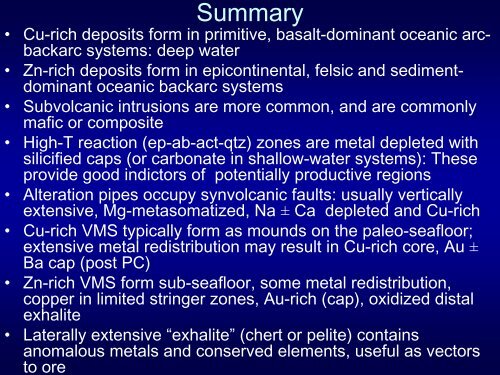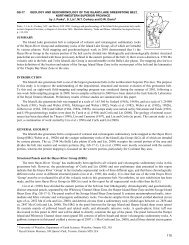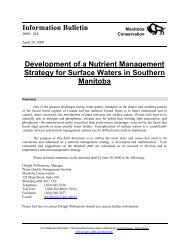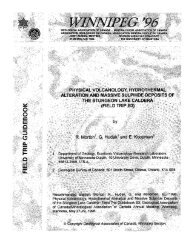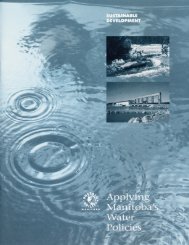Classification and Key Characteristics of VMS Deposits
Classification and Key Characteristics of VMS Deposits
Classification and Key Characteristics of VMS Deposits
You also want an ePaper? Increase the reach of your titles
YUMPU automatically turns print PDFs into web optimized ePapers that Google loves.
Summary• Cu-rich deposits form in primitive, basalt-dominant oceanic arcbackarcsystems: deep water• Zn-rich deposits form in epicontinental, felsic <strong>and</strong> sedimentdominantoceanic backarc systems• Subvolcanic intrusions are more common, <strong>and</strong> are commonlymafic or composite• High-T reaction (ep-ab-act-qtz) zones are metal depleted withsilicified caps (or carbonate in shallow-water systems): Theseprovide good indictors <strong>of</strong> potentially productive regions• Alteration pipes occupy synvolcanic faults: usually verticallyextensive, Mg-metasomatized, Na ± Ca depleted <strong>and</strong> Cu-rich• Cu-rich <strong>VMS</strong> typically form as mounds on the paleo-seafloor;extensive metal redistribution may result in Cu-rich core, Au ±Ba cap (post PC)• Zn-rich <strong>VMS</strong> form sub-seafloor, some metal redistribution,copper in limited stringer zones, Au-rich (cap), oxidized distalexhalite• Laterally extensive “exhalite” (chert or pelite) containsanomalous metals <strong>and</strong> conserved elements, useful as vectorsto ore


